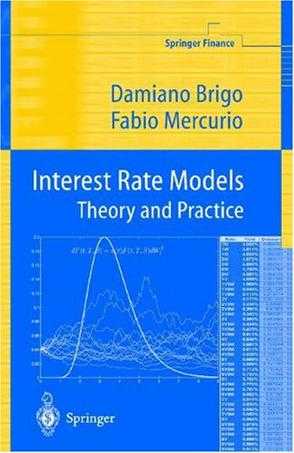Interest Rate Models

作 者 Damiano Brigo,Fabio Mercurio
标 签 金融数学
简 介
The 2nd edition of this successful book has several new features. The calibration discussion of the basic LIBOR market model has been enriched considerably, with an analysis of the impact of the swaptions interpolation technique and of the exogenous instantaneous correlation on the calibration outputs. A discussion of historical estimation of the instantaneous correlation matrix and of rank reduction has been added, and a LIBOR-model consistent swaption-volatility interpolation technique has been introduced. The old sections devoted to the smile issue in the LIBOR market model have been enlarged into a new chapter. New sections on local-volatility dynamics, and on stochastic volatility models have been added, with a thorough treatment of the recently developed uncertain-volatility approach. Examples of calibrations to real market data are now considered. The fast-growing interest for hybrid products has led to a new chapter. A special focus here is devoted to the pricing of inflation-linked derivatives. The three final new chapters of this second edition are devoted to credit. Since Credit Derivatives are increasingly fundamental, and since in the reduced-form modeling framework much of the technique involved is analogous to interest-rate modeling, Credit Derivatives -- mostly Credit Default Swaps (CDS), CDS Options and Constant Maturity CDS - are discussed, building on the basic short rate-models and market models introduced earlier for the default-free market. Counterparty risk in interest rate payoff valuation is also considered, motivated by the recent Basel II framework developments.[Interest Rate Models.pdf](https://v1cdn.cnq.net/file/2010/Interest Rate Models.pdf)
投资文献, 书籍分享
风险提示及免责条款
市场有风险,投资需谨慎。本文不构成个人投资建议,也未考虑到个别用户特殊的投资目标、财务状况或需要。用户应考虑本文中的任何意见、观点或结论是否符合其特定状况。据此投资,责任自负。本文来自互联网用户投稿,文章观点仅代表作者本人,不代表本站立场。本站仅提供信息存储空间服务,不拥有所有权,不承担相关法律责任。如若转载,请注明出处。如若内容有涉嫌抄袭侵权/违法违规/事实不符,请点击 举报 进行投诉反馈!
